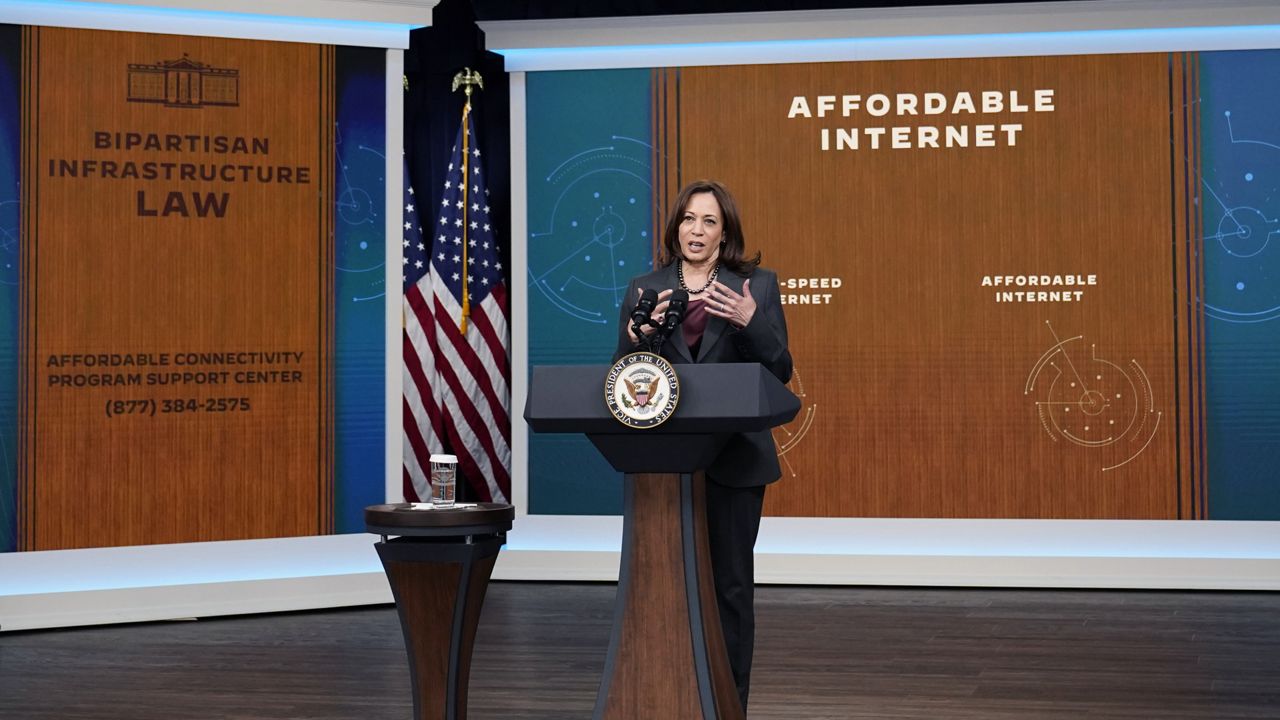Vice President Kamala Harris on Monday touted the administration’s efforts to give more Americans access to high-speed internet, saying over 10 million households were able to sign up for a reduced-cost broadband program thanks to funding included in last year’s Bipartisan Infrastructure Law.
“In the 21st century, high speed internet is a necessity. Not a luxury – a necessity,” Harris said from the White House. “Our world has moved online and that is why from day one, the president and I have fought to make it easier for everyone to access and afford high speed internet.”
The program, dubbed the Affordable Connectivity Program, was allocated $14.2 billion to help low-income households afford high-speed internet. Households can apply for a $30 per month discount toward internet services; households on Tribal lands can receive up to $75 per month.
Those eligible can also receive a $100 discount towards the purchase of a laptop, desktop computer or tablet, so long as the family can contribute between $10 and $50 towards the overall price.
The effort is a modification of the Emergency Broadband Benefit program, a temporary pandemic-era initiative created last year. Those who were enrolled under the previous program will continue to receive their monthly discount until March 1, and will be automatically enrolled into the Affordable Connectivity Program, should they meet the requirements.
Those requirements have been updated slightly under the new program: Households with income up to 200% more than the federal poverty limit can apply, up from a 135% benchmark last year; the monthly benefit for non-Tribal households will decrease from $50 to $30 and a prohibition on upselling.
Approximately 93% of Americans use the internet, according to a 2021 study from Pew Research. Still, there are many barriers to home broadband access, and individuals in minority groups or from low socio-economic backgrounds are less likely to have access to the internet at their home. Rural areas are also more likely to lack access to adequate internet services.
Some experts estimate that 42 million Americans do not have access to high-speed internet at their homes, which was highlighted during the coronavirus pandemic, when everything from work to school to doctors appointments shifted online.
“When we connect families and workers, students and small business owners with high speed internet, we connect them to opportunity,” Harris said Thursday. “The opportunity to work and learn remotely, to see a doctor online, to buy groceries through an app, to deposit a check without having to go to the bank.”
“In short, the opportunity to live healthier, happier, efficient and more prosperous lives,” she added.
Last year’s $1.2 trillion package dedicated $65 billion to broadband expansion to be used in a number of ways. Some of the funding will build physical broadband infrastructure in rural and other historically underserved communities.
Harris was tapped by President Joe Biden to lead the administration’s push to increase access to high-speed internet last year, and has previously led discussions with community leaders to discuss the issue.
“It is a historic accomplishment,” Harris said of the Affordable Connectivity Program on Monday. “This milestone means more entrepreneurs are building digital businesses. More families are staying connected. More children in our country are able to do their homework at home. And this is only the beginning.”



